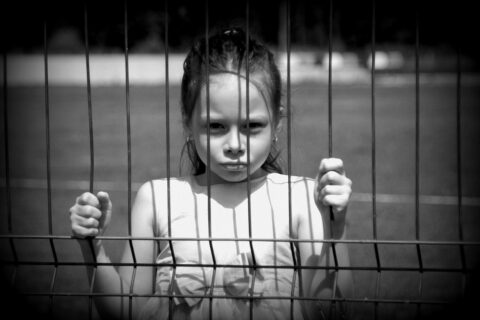INTRODUCTION
Trauma is often thought to be any life threatening situation. It’s easy to imagine a tornado, war, armed robbery as trauma. Most people also recognize rape and sexual abuse as trauma, because it invades the most intimate parts of the body. Sexual trauma robs the individual of their power over their own body, and even permanently changes the structure of a person’s brain (Van Der Kolk, 2014).
Many people would readily agree that the above-mentioned situations describe abuse. Yet these same people would also deny the existence of spiritual abuse, much less acknowledge it as trauma.
However, just as sexual abuse affects an individual by invading the physical and emotional aspects of intimacy, spiritual abuse invades the intimacy of the very soul itself. Much like sexual abuse perverts what was intended to be beautiful about physical romantic intimacy, spiritual abuse perverts God’s intimacy with the soul of a human being.
Trauma occurs when an individual is harmed or threatened with harm, and they have no way to fight it off or flee from it (Van Der Kolk, 2014). Spiritual abuse is wrapped in a cloak of sanctimony that makes it difficult to identify at first. Then it threatens eternal damnation and separation from God–and how can the person fight or flee from this form of abuse? This insidious form of abuse leaves people just as broken as incest, rape, war, or violence. While other forms of abuse focus on the body and the mind, spiritual abuse scars the soul.
DYNAMICS
Working with clients who have been victims of sexual or physical abuse, I often find that their stories have a similar flair, in that the perpetrator of the abuse kept them separated from others so they wouldn’t realize the abuse for what it was. Maybe that uncle that raped him continually through his childhood told him it was “our special bond”. Or, maybe her dad told her “this is what dads and daughters do”. Trying to normalize the abnormal is a common key for abusers. Keeping the events secret perpetuates the crime, and keeps the child from knowing that what is happening is not okay. Because adults “know everything”, they assume they must put up with the treatment that is painful and confusing in most cases.
In this same way, we see that spiritual abuse usually involves an element of secrecy. The constituents are told that they are the only “right way” to be saved, and that other denominations or churches are “not right with God” or are “heresy”. They are encouraged to keep quiet about things that go on behind the scenes, and to not tell visitors of all of the rules and regulations until they are “part of us”. The leadership of such groups inundate the people with messages that lift themselves up to a place of authority over others. This is done to such a degree as to make people feel like they are not smart enough or close to God enough to make their own decisions and must go with what leadership says, regardless of their feelings about it, “in order to be saved”. These groups generally have entire services directed towards “rebellion” against the leadership being a sin, or they may include the comments often in their sermons. The constituents are taught that “this is what the New Testament church did”, even though there is no proof for that in the Bible. They often preach about how much they love the “saints” and it is acted out by preferential treatment to those who swallow it all and work the hardest to obey the leadership.
EFFECTS
So, what are the effects to the victims of the different types of abuse and trauma? Can spiritual abuse cause similar harm to that of physical or sexual abuse?
Working with sexual abuse victims and physical abuse victims, we often see a startle instinct that is overactive. Sometimes this is called a hyper-awareness. They are vigilant while in play, as their brains learned early that not every situation is safe. They often have nightmares. They may get very emotional at times, about things that make no sense to others. They may acquire social anxieties, regress in their development, or avoid others by curling into a ball under a desk at school. Triggers are everywhere for these individuals, and no one understands what that feels like except them.
Maybe he has anxiety attacks when he sees a red plaid shirt like the one uncle wore when he raped him. She may scream and cry or throw things when she smells the odor of a mechanic shop, because that smell triggers the memory of dad when he was molesting her. I’ve seen times where kids had to turn on every light they saw, all day long, and would get frantic if not allowed to do so, because something bad happened to them in the dark of night. Another adult client shared with me that she would hide in the closet to avoid her grandfather raping her, and that she still feels like the closet is her safe place when she is scared.
How does this apply to spiritual abuse?
Having spent some time talking to many victims of spiritual abuse, it is apparent that there are definite parallels. Symptoms of PTSD are very evident in these individuals. Panic attacks are common, sleepless nights where nightmares and fears reign, hyper awareness, and even social anxieties are present in the majority of these individuals. Paralyzing fear for no apparent reason is often a continual battle for those recovering from spiritual abuse. They learned in the most primitive parts of their brains that the place they were told was the safest in the world, church, turned out to be the most frightening for them. Triggers are present all around them in words spoken, actions taken, and faces they see on the street. However, the most frightening place of all has come to be a church building.
I’ve heard her describe getting up to leave during a sermon because she couldn’t breathe and was having a panic attack. He described being unable to sleep every single night. The odor of olive oil causes her to feel sick because it is what her abusive pastor used on her when he told her she was possessed of a demon. Seeing a white shirt and tie on someone carrying a Bible causes an instant heart rate increase and the urge to run in the opposite direction. Not going to church at all is often the only way to find peace and start healing.
References
Van der Kolk, B. A. (2014). The body keeps the score: Brain, mind, and body in the healing of trauma. New York: Viking.
Spiritual Abuse as Trauma (Part 2)
********
Shop at our Amazon store! As an Amazon Influencer, this website earns from qualifying purchases.


